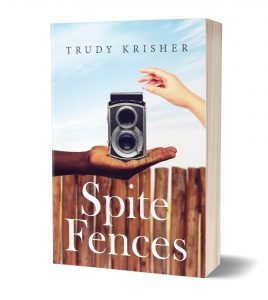BrIDGES, NOT FENCES.
wHY i wROTE
SPITE FENCES.
I must confess: I am a questioner. All of my novels are a struggle to answer the most difficult questions about our lives as human beings. I never entirely succeed, of course. But I never stop trying.
In the case of SPITE FENCES, the question is, "Why do we try to wall each other out by building fences? Why don't we build bridges across our divides instead?"
SPITE FENCES, set in the Jim Crow South of the 1960s, is a novel about the historical barriers erected against equal treatment for African-Americans: prohibitions about riding buses, using restrooms, sitting in movie theaters, swimming in local pools, eating at lunch counters. All of those prohibitions are fences, limiting opportunity, begging to be torn down.
As a young woman observing the Civil Rights Movement and the progress it brought about, I had hope that America’s racial struggles would be over. I was a lot like my heroine Maggie Pugh, whose photographs held out hope for changing the world. From the perspective of 25 years, I now see how naive we both were. Fences continue to be erected: against immigrants, against women’s freedom, against African-Americans still seeking equity in education, housing, and the criminal justice system. Politicians and their followers shout “Build That Wall,” and the spiral of violence, hatred, and injustice continues. I am reminded of Faulkner’s words that “the past is never dead; it’s not even past.”
SPITE FENCES continues as a timeless and relevant story, for Maggie Pugh’s struggle is our struggle. Her observations are worth remembering in every era and every circumstance, for she represents our collective human struggle to remember that “Somehow, we’re all kin.”
Trudy Krisher – October 2019

